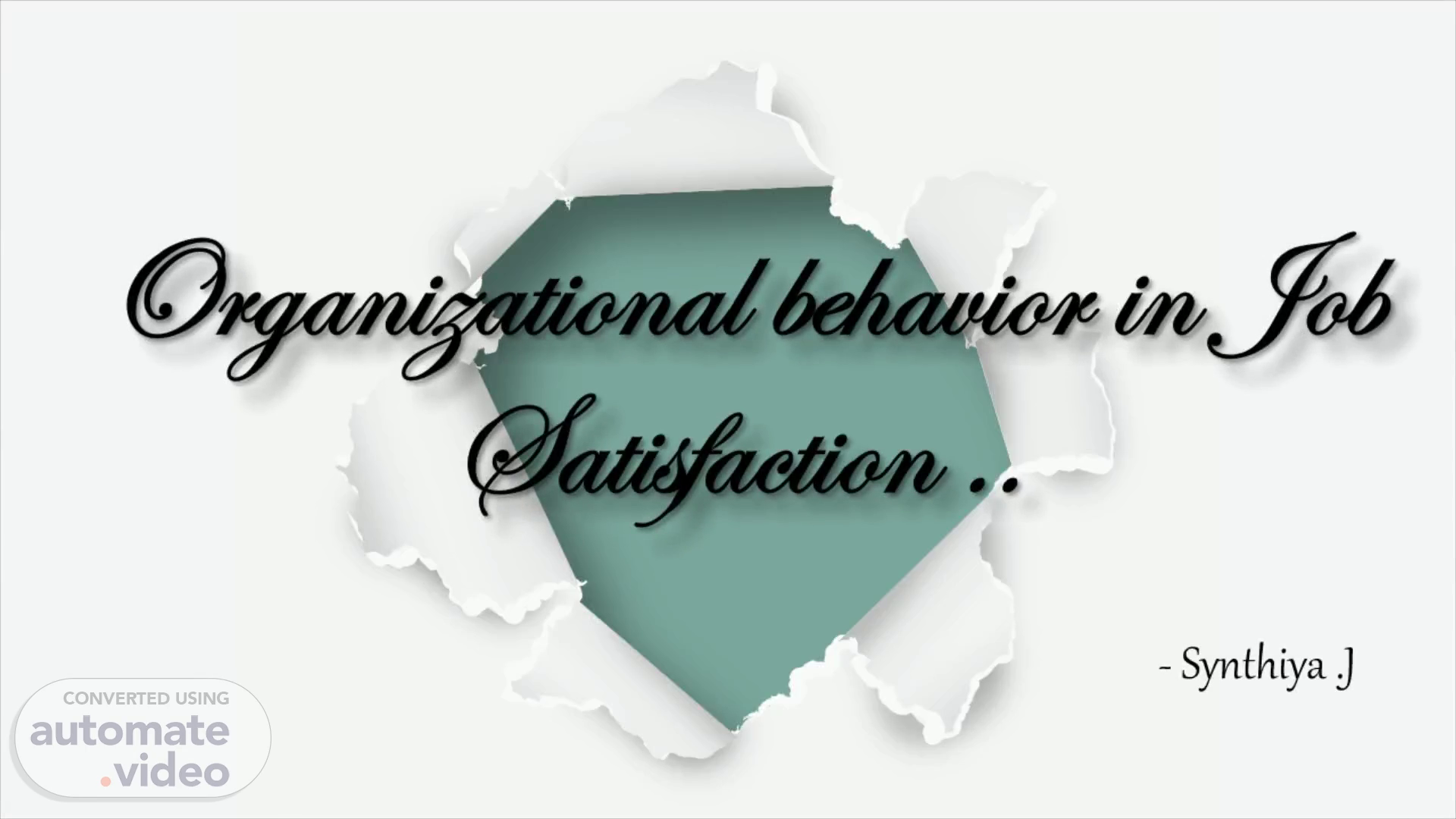
Page 1 (0s)
Organizational behavior in Job Satisfaction ... - Synthiya .J.
Page 2 (7s)
Dimension of Job Satisfaction. There are three dimensions of overall job satisfaction which include general satisfaction, internal work motivation, and growth satisfaction, which are combined into a single measure.
Page 3 (19s)
Job Satisfaction - Structure. Structure of the organization showed a marked consistency in the effects of specialization, formalization and centralization on job satisfaction ..
Page 4 (31s)
4. BETTER SERVICE EMPLOYEE EMPLOYEE SATISFACTION PRODUCTIVITY CUSTOMER LOYALTY CUSTOMER SATISFACTION PROFITS.
Page 5 (37s)
5. Satisfaction Recognition & achievement nterestlng wor & responsibilit Advancement & growth Dissatisfaction Salary, & recognized status Organizational policies Supervision & job security Work relationships.
Page 6 (46s)
Date. 6. 1 Aptitude Knowledge ASSESS VALUES ASSESS EUOIIOUL Insights Personality ASSESS PERSONALITY* *ARES IWIS ASSESS.
Page 7 (53s)
Questions. 1 . What are all the challenges when measuring job satisfaction? 2. How lower job satisfaction was strongly correlated with the presence of mental/psychological problems? 3. How do you promote and support work-life balance? 4. Extrinsic or intrinsic job satisfaction which is works and how? 5. According to you, what are all the things that bring job satisfaction to an employee? 6. What do you think about the EVLN model? 7. List a few safety measures which bring job satisfaction 8. Could you explain the impact of job dissatisfaction on an employee. 9. What are all the signs of job satisfaction for an employee and organization? 10. What are all the models of job satisfaction used in mas linea fashion,?.
Page 8 (1m 26s)
HR 1- MRS. MERCY Company Policies Effects on their sadness, anxiety and anguish Encourage breaks by putting songs. Both will work, according to his or her engage state Rewards Exit, Voice, Loyalty, Neglect (EVLN) is politics and organizational behavior. ESI and suggestions Not engaged at their work . lost productivity. Frequent leaves Career Development, training, communication.
Page 9 (1m 47s)
HR 3- MS. PARMILA Without using the management help Job overload |reach the target| Employee Engagement activity Intrinsic motivation for particular behaviors are better able to do those things and to sustain them over time Creativity in job Four different ways that employees respond to dissatisfaction ESI LACK OF PRESENTS. Time off Career Development, training, communication.
Page 10 (2m 5s)
HR 4- MS. SWATHI Responsibilities Stress EE Activities. Intrinsic – brings motivation Personal Interest and Hobbies. Four different ways that employees respond to dissatisfaction ESI Emphasize Efficiency Over Hours Worked Good work-life balance Career Development.
Page 11 (2m 20s)
HR 2 – ZAHIR To understand their Feel of Belongings. Limited career growth Job insecurity and Flexible Work Offer health cash plans Extrinsic factors – compensation and work conditions Feedbacks The EVLN model identifies four different ways that employees respond to dissatisfaction ESI Absenteeism Good relationships with superiors Career Development, training, communication And some others make the employee satisfied.
Page 12 (2m 38s)
HR 5- MR. KARTHIK Initiation and Leadership. Frustration Some extra care of employee Intrinsic – which gives rise to employee working standards high Safety and Security. Four different ways that employees respond to dissatisfaction ESI Ask Employees What They Need. Good relationships with superiors HR'S Career Development, training and communication also extra employee activities.
Page 13 (2m 56s)
Increased employee job satisfaction . Lower turnover rates . Increased productivity, profits and efficiency learning as simply the acquisition of new behaviour based on environmental conditions . Used Classical Conditioning, Operant Conditioning, Cognitive Theory, and Social Learning Theory . To be self-directed motivation The 5 factors : engagement, respect (praise and appreciation), fair compensation, motivation, and life satisfaction all help lead to job satisfaction in the workplace. While extrinsic factors like compensation are important, intrinsic factors generally contribute more to job satisfaction. well-designed and prepared training activities in a training program will result in job training satisfaction Learned about Workplace Learning, Job Satisfaction, Organizational Commitment.
Page 14 (3m 26s)
For all the HR’s Special thanks to Mas Holdings. Thank You!.